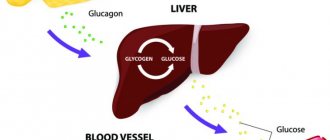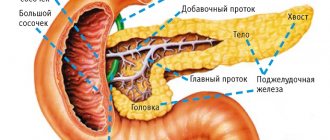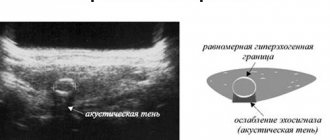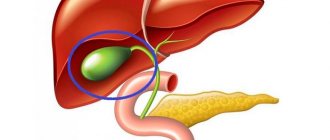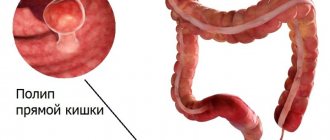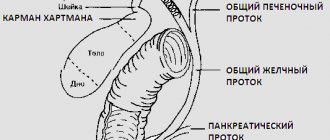The pancreas in the human body functions for the normal processing of ingested food, ensuring its maximum possible absorption. Responsible for the timely release of a certain gastric juice containing a large assortment of various enzymes. Next, we will consider where the gland is located, how it hurts, and what symptoms a person experiences with pain.
Where is the human pancreas located? Photo of the location of the pancreas
The pancreas is the organ that produces gastric juice and the required enzymes. The compartments produced by it facilitate the processing of proteins with fats. In addition, the endocrine glands located in the cells of the islets appear in the summary - insulin and glucagon, which participate in the metabolic procedure of carbohydrates and regulate the level of glucose in the blood.
Externally, the organ is represented by a long lobed element, the size of which is 16-23 cm.
The pancreas is equipped with 3 zones - head, body and tail.
Where is the pancreas located in humans? The location of the body is behind the stomach, near the duodenum, combining with it through the ducts. This intestine encloses the gland, forming a horseshoe shape, and is directly adjacent to the bile duct. The body is adjacent to the posterior side of the surface of the stomach and transversely to the colon, and the tail is adjacent to the fornix of the stomach and the gates of the liver and spleen.
Where is the pancreas located when a person takes a lying position? It goes down under the stomach, which is why it is called the pancreas.
The location of the pancreas fully justifies its name - it is located behind the stomach at the level of the upper lumbar vertebrae. If we project the gland onto the anterior abdominal wall, then its location will correspond to the area 5-10 cm above the navel
On which side is the central section of the pancreas located? If you look at how a person is structured from the side of the spine, the organ is located at the level where the spinal section originates. On which side is the tail of the pancreas located? Regarding the abdominal area, the gland is located just above the umbilical area, about 5 cm, on the left side under the ribs, adjacent to the spleen.
What functions does it perform?
The pancreas is an important organ of the digestive system, which has a mixed function: external (exocrine) and internal (endocrine). The function of external secretion is to secrete pancreatic juice, which contains digestive enzymes necessary for the complete digestion of food. The endocrine function is to produce the appropriate hormones and regulate metabolic processes: carbohydrate, fat and protein.
There are two main functions:
- Exocrine. Produces pancreatic juice to break down and process food. Digestive enzymes are secreted by the pancreas and are used to quickly break down ingested food. The above-mentioned juice will contain certain substances that reliably protect the intestinal surface from the negative effects of acids.
- Endocrine. Produces insulin and glucagon in the required quantities. It is under the influence of insulin that the level of glucose in the blood decreases. Under the influence of glucagon, this process has the opposite effect. If insulin and glucagon are in normal quantities, then the entire carbohydrate process occurs normally. If various changes occur, there is a risk of developing diabetes mellitus. If sharp pain processes occur in the abdominal area, it is necessary to quickly determine the cause of such undesirable processes and take action to eliminate them.
The role of the pancreas in the human body
One of the main functions of the pancreas is the production of pancreatic juice, which is needed to digest food. The largest amount of this juice is secreted for carbohydrate foods (remember this, it will come in handy), a little less when we consume protein foods, and even less for fatty foods.
In a healthy state, the gland produces a liter to one and a half liters of pancreatic juice per day, which flows through small excretory ducts from the lobules into the main duct, which flows into the duodenum. If the gland hurts, then inflammation gets involved, “production volume” drops sharply, and the digestive process is seriously disrupted.
Pancreatic juice is a colorless liquid that is 98% water, the remaining 2% is enzymes. Each enzyme has a clearly defined function. Yes, amylase. invertase and lactase are responsible for the breakdown of carbohydrates, lipase breaks down fats, and trypsin breaks down proteins.
The gland cells also secrete a special enzyme that protects them from self-digestion.
The composition of the juice changes depending on what a person has eaten; it begins to be released 1 - 3 minutes after eating and ends in 6 - 10 hours.
The second most important task of the pancreas is the production of insulin, a much needed hormone. This hormone comes from the gland directly into the bloodstream. The role of the “insulin factory” is performed by special cells collected in groups.
After the name of the discoverer, they received a sonorous name: the islets of Langerhans. These are cellular clusters surrounded by networks of capillaries. The diameter of each of the islands is 0.1 - 0.3 mm, their total number ranges from 1 to 2 million. Most of them are in the tail area.
Pancreas dimensions
- In terms of size, the pancreas ranks second after the liver among organs that produce enzymes. Its formation begins already in the fifth week of pregnancy. In a newborn child, the gland is up to 5 cm long, in a one-year-old child - 7 cm, by the age of 10 its dimensions are 15 cm in length. It reaches its final size in adolescence, by the age of 16.
- The head of the pancreas is its widest part, its width is up to 5 cm or more, the thickness varies from 1.5 to 3 cm. The body of the gland is the longest part, its width is on average 1.75-2.5 cm. Length tail - up to 3.5 cm, width about 1.5 cm.
- Due to its deep location, diagnosing pancreatic pathologies is very difficult. Therefore, an important point in diagnosis is an ultrasound examination, which allows you to determine the shape and size of the gland, on the basis of which you can draw appropriate conclusions about its condition.
- All organ sizes, as well as possible reasons for their changes, are recorded in detail in the ultrasound protocol. In an unchanged state, iron has a homogeneous structure. Small deviations from the normal sizes of the head, body and tail are permissible only if the biochemical blood test is good.
The size of the pancreas is normal
The length of the gland in an adult is from 15 to 22 cm, its weight is approximately 70-80 grams. The thickness of the head should not exceed 3 cm, other data indicate pathology.
Diagnosis of diseases
Unfortunately, pancreatic diseases are difficult to diagnose in the early stages. At this time there are no pronounced symptoms yet. Although, provided that the disease is detected early, the treatment initiated does not transform the inflammation into a chronic form. There are diagnostic methods such as clinical, laboratory and instrumental. They allow us to determine the characteristics of the development of the disease. Thanks to this, doctors make an accurate diagnosis.
In the clinical method, the doctor examines the patient and talks with him. Based on this, a preliminary diagnosis is made. This is not always objective, because often the signs of pancreatic diseases are similar to the symptoms of other diseases. To clarify, laboratory diagnostics are prescribed. These are blood and urine tests. The presence of enzymes in them makes the situation clearer.
Instrumental methods include ultrasound examination, but computed tomography is more informative. Both of these methods examine the anatomical features of the pancreas:
- define contours;
- dimensions, density;
- duct diameter;
- the presence of inflammation and cysts;
- presence of stones;
- existence of tumors.
- Cheesecakes in the oven like in kindergarten
- How to open a Metacom intercom without a key
- How to collect mercury from a broken thermometer
Causes of inflammation of the pancreas
The pancreas is involved in the digestion of foods high in fats, proteins, and carbohydrates. One of its functions is the regulation of carbohydrate metabolism, during which glucagon and insulin are formed and penetrate into the blood. There are many factors that negatively affect the condition of the organ.
The causes of pancreatic disease are:
- consumption of alcoholic beverages;
- genetic disposition;
- as a secondary disease during the formation of stones in the organ and its ducts;
- poisoning;
- viral diseases;
- fungal infections;
- helminthic infestation;
- complications after surgery.
In the presence of such factors, symptoms of pancreatic disease develop. However, statistics show that the disease can have a latent course, when already developed pancreatitis does not make itself felt with acute attacks for a long time, and a person attributes minor pains and disorders to dietary errors.
Symptoms of a latent course are frequent bowel movements, changes in the color and structure of stool, general weakness, and weight loss.
What diseases cause pain in the pancreas?
Pain in the pancreas in humans is not a cause, but a consequence of pathological processes occurring in the organ. Why does a person begin to worry about the pancreas?
List of the most common ailments of this organ:
- Pancreatitis. The clinical picture of the pathology is as follows: pancreatic enzymes accumulate in the organ, which irritate its mucosa. The pancreas tissue becomes inflamed. The process is accompanied by indigestion and pain. Elements enter the bloodstream that can disrupt the function of the heart, liver, and lungs.
- Pancreatic necrosis. The cells of the pancreas gradually die (picture of the affected organ below). Pathology provokes internal bleeding.
- Cholestasis is a phenomenon that occurs in response to chronic inflammation of the pancreas. Stagnation of bile occurs, as biliary processes are disrupted.
- Diabetes mellitus occurs due to insufficient insulin production. A person with diabetes looks like this: he is thin, his skin and visible mucous membranes are dry. He urinates frequently, eats frequently, and is unbearably thirsty. Over time, a person experiences vascular disorders in the limbs, heart, and eye apparatus (symptoms are presented in the pictures).
- Benign tumors. The structure of the pancreas changes: its individual tissues actively multiply. The origin of the tumor can be glandular, connective or fatty. Can such a formation hurt? The tumor develops for a long time without causing discomfort to the patient. It manifests itself when it reaches significant sizes. It puts pressure on the intestines, liver, and gallbladder, which leads to dysfunction of the latter.
- Cancer. Appears as a result of gland adenoma, diabetes mellitus. Malignancy of the cells of the organ and its ducts leads to compression of the latter.
- Abscess. Develops against the background of an inflamed pancreas and excessive consumption of alcoholic beverages. Dead cells accumulate in the tissues of the organ, which ends in suppuration of the mucous membrane.
- Splenic vein thrombosis is also a result of pancreatitis. The functioning of the spleen is impaired. A man vomits blood. His stomach hurts a lot.
Another article on this topic: What can and cannot be eaten with pancreatitis? List of approved products
How does the pancreas hurt in humans?
It is difficult for a person who has never encountered difficulties with the functioning of the pancreas to recognize that the problem lies precisely in it. Where does the pancreas hurt? The oblong shape of the organ can provoke pain in different places. Thus, an inflamed head provokes a focus of pain on the right, and many attribute it to the liver. Pain in other parts creates discomfort in the hypochondrium. Cases of acute pancreatitis even make the nature of the pain girdling.
The main symptoms of problems with the pancreas are:
- High temperature (from 38 degrees).
- Attacks of nausea, turning into vomiting with a sour taste.
- Decreased appetite or lack thereof (often causes sudden weight loss).
- Girdle pain (or in the left hypochondrium). The discomfort is so severe that changing position (lying, sitting or standing) cannot significantly alleviate the suffering.
- There is a feeling of fullness in the left hypochondrium. This symptom is worse after eating or drinking, and also in the morning.
- Intense thirst.
- Yellowish tint to the skin and whites of the eyes.
- Increased sweating.
- Feeling of bitterness in the mouth.
- Sometimes a state of shock occurs.
Often the pain becomes more active after eating, and if you don’t eat, it doesn’t make itself felt at all. In addition, the patient may exhibit symptoms of toxicosis, i.e., a persistent aversion to a number of foods.



